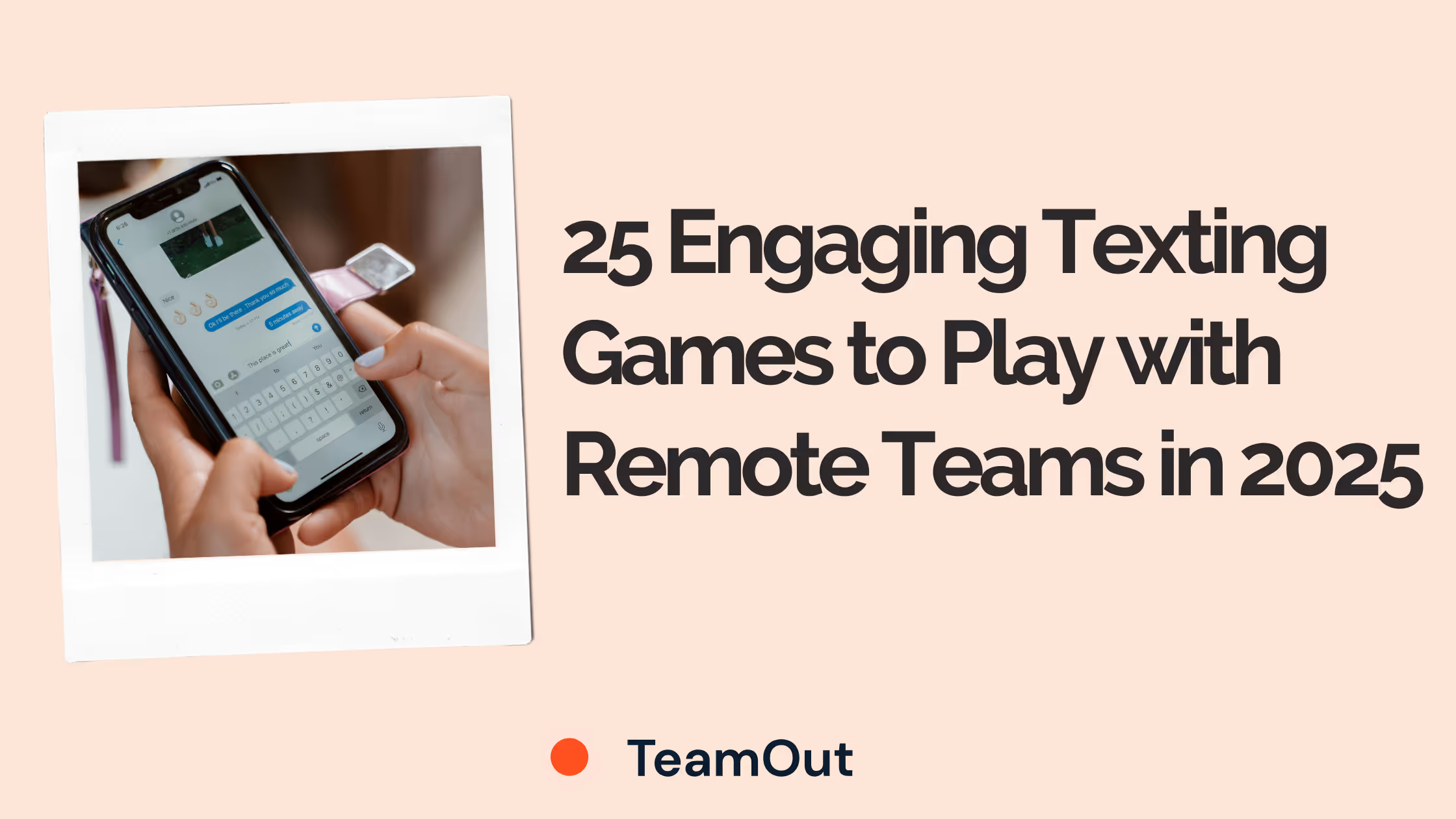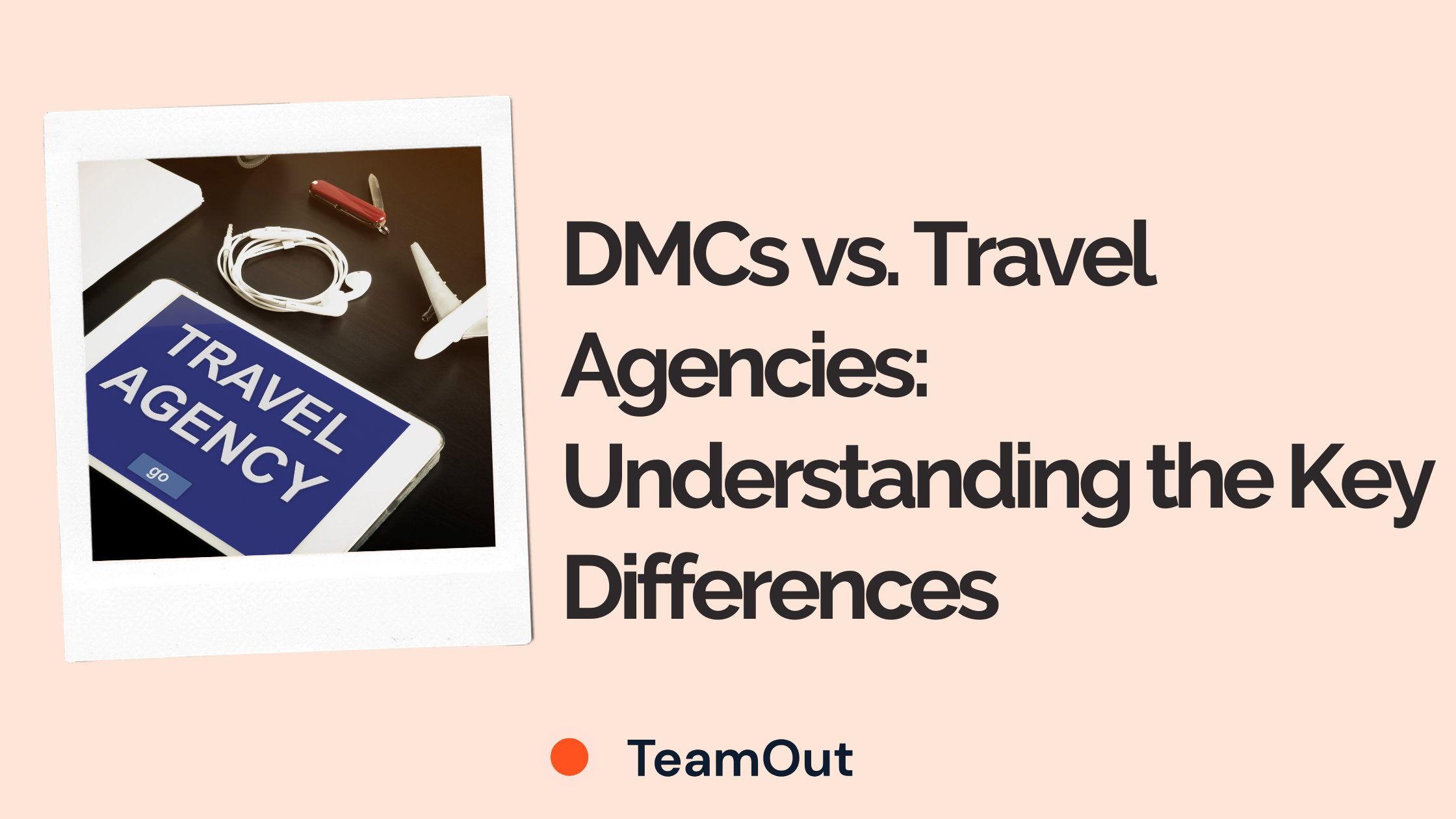What Does an Offsite Meeting Mean for Your Team?
The definition of an off-site meeting is not always clear. If you think it's just a regular meeting in a different location, you're setting yourself up for failure. An off-site meeting is a strategic investment designed to break your team out of their daily routines and create space for the kind of deep thinking and relationship building that's impossible in your regular office setting.
The reason why the offsite concept works when you do it right is that you're removing three major barriers that kill effective teamwork:
- Environmental distractions that keep pulling your team's attention back to daily tasks
- Time constraints that force surface-level discussions instead of meaningful dialogue
- Hierarchical barriers that prevent open and honest communication in formal office environments
But here's where it gets tricky: The magic doesn't happen automatically just because you've changed locations. You need a structured agenda that intentionally makes room for opportunities for both business progress and team cohesion.
Don't be the company that spends $50,000 on a beautiful venue only to recreate the same dysfunctional meeting patterns you have back at the office.
Why Your Remote Team Needs This More Than Ever
Globally, fully remote workers have the highest engagement at work (31%), compared to hybrid (23%) and on-site employees (19–23%), according to the latest State of the Global Workplace report. However, only 36% of fully remote employees say they’re thriving in life, and they experience more stress (45%), anger, sadness, and loneliness than those working on-site or hybrid.
If you're managing remote teams, you already know that Zoom calls and Slack messages can only take relationships so far. For this reason, your off-site meeting becomes one of your most valuable tools for bringing remote teams together in a new, inspiring location, helping build the kind of connections that make collaboration work.
You've probably noticed that teams that seem to function well virtually often discover communication gaps and relationship issues when they finally meet in person. This is not evidence of failure but an opportunity to strengthen bonds and improve collaboration in ways that aren't possible through screens.
Remote teams come with unique challenges that off-site meetings are uniquely positioned to solve. Here’s why your remote team can’t afford to skip an offsite event this year:
- Physical and mental distance erodes team cohesion. Remote workers miss out on spontaneous team bonding, hallway conversations, and shared meals: experiences that are proven to boost wellbeing, a relevant corporate trend for 2025.
- Offsite meetings provide a structured way to encourage participation, celebrate team achievements, and re-ignite team morale through creative team-building activities.
- Technology fatigue is real, and virtual collaboration has its limits. Dependencies on digital tools can frustrate teams, especially when coordinating complex projects. Off-site agendas break the cycle of video calls.
The modern offsite serves multiple purposes for your organization:
- Strategic alignment: You can ensure everyone understands your company's vision and their role in achieving it
- Relationship building: Your team members can develop the personal connections that make remote work more effective
- Skill development: You can invest in professional development that benefits both individuals and the organization
- Culture reinforcement: You can strengthen your company culture through shared experiences and values discussions
Before You Start: What You Need to Know About Offsite Planning
Understanding Your Team's Unique Dynamics
You can't use a cookie-cutter approach to off-site planning. Every team has different needs, challenges, and dynamics that will influence what kind of agenda will work best for your group.
Ask yourself these critical questions:
- How well do your team members know each other? If you have a lot of new hires or remote workers, you'll need more relationship-building activities
- What are your biggest communication challenges? If departments don't collaborate well, you'll want breakout sessions that mix different groups or communication-themed activities
- Where is your team in its development cycle? A startup team needs different activities than an established team going through organizational changes
- What's your company culture like? Some teams thrive on competitive activities, while others prefer collaborative problem solving
Setting Clear Objectives (This Is Where Most People Mess Up)
You need to be brutally honest about what you want to achieve. Vague goals like improve teamwork or boost morale won't give you the focus you need to create an effective agenda.
Instead, get specific about your desired outcomes:
- Business objectives: What strategic decisions need to be made? What problems need solving?
- Team development goals: What skills or relationships need strengthening?
- Cultural outcomes: What values or behaviors do you want to reinforce?
- Individual growth targets: How can this experience contribute to professional development?
You should be able to measure success in concrete terms. If you can't define what success looks like, you're not ready to plan your offsite agenda yet.
Budget Reality Check
You don't need to break the bank to create a transformative experience, but you do need to be strategic about where you invest your resources. The most expensive mistake you can make is trying to do everything on the cheap and ending up with an event that accomplishes nothing.
Here's how to think about budget allocation:
- Venue and logistics (40-50% of budget): You need a space that supports your objectives, not just looks impressive
- Professional facilitation (20-30% of budget): This is where you get the biggest ROI for complex strategic sessions
- Activities and experiences (15-25% of budget): Choose activities that align with your goals, not just what sounds fun
- Food and hospitality (10-15% of budget): Don't underestimate the power of good meals for relationship building
What to Discuss at an Offsite: Core Content Framework
Strategic Planning Sessions That Work
The difference between productive strategy discussions and corporate theater comes down to preparation and structure.
Here's how to make your strategic planning sessions meaningful:
You need to do the heavy lifting before you arrive. Send relevant data and background materials to your team members at least a week in advance.
Structure your strategic discussions around these key areas:
- Current state assessment: Where are you now, and what's working or not working?
- Future vision alignment. Where do you want to be, and what does success look like?
- Gap analysis and problem solving: What obstacles are preventing progress?
- Resource allocation decisions: How will you prioritize time, money, and people?
- Action planning: Who will do what by when?
Don't use your precious offsite time for information sharing—use it for decision making and creative thinking.
Team Building That Goes Beyond Trust Falls
You don't need gimmicky team-building exercises to build stronger relationships. The most effective team building happens when you create opportunities for your team members to see each other in new contexts and work together on meaningful challenges.
Focus on activities that serve multiple purposes:
- Problem-solving challenges that require different skills and perspectives
- Skill-sharing sessions where team members teach each other
- Cross-functional projects that break down departmental silos
- Storytelling exercises that help people understand each other's backgrounds and motivations
The key is choosing activities that feel authentic to your team culture and directly support your business objectives.
Professional Development Integration
Your offsite is an opportunity to develop skills that benefit the individuals and the organization. You can address training needs that are hard to tackle during regular work time.
Consider these professional development approaches:
- Leadership development for emerging managers, e.g., through leadership activities
- Communication skills training for better collaboration
- Technical skills workshops relevant to your industry
- Soft skills development, like stress management or creative thinking
- Career planning discussions that help with retention
Proven Offsite Agenda Templates
Template 1: The Strategic Alignment Offsite
Best For: Leadership teams, quarterly planning, major strategic decisions
Duration: 2 days
Team Size: 8-15 people
Day 1: Foundation Setting
9:00 AM - Welcome & Context Setting (30 minutes)
Start by reviewing the agenda, setting ground rules, and ensuring everyone understands why you're here and what you hope to accomplish.
9:30 AM - Current State Assessment (90 minutes)
Break into smaller groups to analyze different aspects of your business. Each group presents its findings to identify patterns and priorities.
11:00 AM - Break (15 minutes)
11:15 AM - Vision Alignment Workshop (2 hours)
Work together to clarify or refine your company's vision and ensure everyone interprets it the same way. It's not about creating new vision statements but about ensuring shared understanding.
1:15 PM - Lunch & Informal Networking (75 minutes)
2:30 PM - Strategic Priorities Session (2 hours)
Identify your top 3-5 strategic priorities for the next quarter or year. Use structured decision-making processes to ensure you're not just going with the loudest voice in the room.
4:30 PM - Break (15 minutes)
4:45 PM - Resource Allocation Discussion (75 minutes)
Discuss how you'll allocate time, budget, and people to support your strategic priorities. Make preliminary decisions that you can finalize tomorrow.
6:00 PM - Team Dinner
Use this time for relationship building and informal conversation. Don't schedule formal presentations during dinner.
Day 2: Action Planning
9:00 AM - Day 1 Recap & Adjustments (30 minutes)
Review yesterday's decisions and make any necessary adjustments based on overnight reflection.
9:30 AM - Implementation Planning (2.5 hours)
Break into working groups to develop detailed action plans for each priority. Include timelines, resource requirements, and success metrics.
12:00 PM - Lunch (60 minutes)
1:00 PM - Cross-Team Dependencies (90 minutes)
Identify where different initiatives will need to coordinate and establish communication protocols.
2:30 PM - Break (15 minutes)
2:45 PM - Accountability Framework (75 minutes)
Establish how you'll track progress, when you'll check in, and what you'll do if things get off track.
4:00 PM - Next Steps & Commitments (60 minutes)
Each person commits to specific actions they'll take in the first 30 days. Schedule follow-up meetings and establish communication rhythms.
TeamOut Enhancement: Professional facilitation becomes crucial for strategic sessions like these. You need someone who can keep discussions productive, manage different personality types, and ensure decisions actually get made.
Template 2: The Team Building & Culture Offsite
Best For: New teams, post-merger integration, culture transformation
Duration: 1.5 days
Team Size: 15-40 people
Day 1: Connection Building
10:00 AM - Arrival & Welcome (30 minutes)
Create a warm, inclusive atmosphere that sets the tone for open communication and collaboration.
10:30 AM - Team Introductions Plus (90 minutes)
Go beyond basic introductions. Have people share their professional journey, what they're passionate about, and what they hope to contribute to the team. You can include some icebreakers at this point.
12:00 PM - Lunch & Networking (75 minutes)
Structured networking with conversation starters that help people find common ground.
1:15 PM - Company Culture Workshop (2 hours)
Explore your current culture, identify what's working well, and discuss what you want to strengthen or change. Use interactive exercises that get everyone participating.
3:15 PM - Break (15 minutes)
3:30 PM - Cross-Functional Team Challenge (2 hours)
Mix people from different departments into teams for a problem-solving challenge that requires diverse skills and perspectives.
5:30 PM - Reflection & Sharing (30 minutes)
Teams share what they learned about each other and how they can apply these insights back at work.
6:00 PM - Group Dinner & Social Time
Relaxed atmosphere for continued relationship building.
Day 2: Skill Building & Action Planning
9:00 AM - Communication Styles Workshop (2 hours)
Help team members understand different communication preferences and work styles. This is practical skill development that improves daily collaboration.
11:00 AM - Break (15 minutes)
11:15 AM - Collaborative Problem Solving (2.5 hours)
Work on real business challenges in mixed groups. Focus on how different perspectives contribute to better solutions.
1:45 PM - Lunch (60 minutes)
2:45 PM - Team Charter Development (90 minutes)
Create agreements about how you'll work together, communicate, and handle conflicts. Make this practical and specific.
4:15 PM - Action Planning & Commitments (45 minutes)
Each person commits to specific behaviors they'll practice to strengthen team culture.
TeamOut Enhancement: Culture-focused offsites benefit from professional facilitators who can navigate sensitive conversations and ensure everyone feels heard.
Advanced Offsite Agenda Strategies
Handling Difficult Team Dynamics
You'll inevitably encounter challenging situations during your off-site meeting. Maybe you have team members who dominate discussions, others who never speak up, or departments that can't seem to collaborate.
Here's how to address common challenges:
The Dominating Personality
You need to establish ground rules early that encourage balanced participation. Use activities like round-robin discussions where everyone gets equal speaking time. If someone consistently interrupts or monopolizes conversations, address it privately during breaks rather than calling them out publicly.
The Silent Team Members
Some people need different ways to contribute. Provide options like written brainstorming before verbal discussions, smaller breakout sessions where quieter voices feel more comfortable, or anonymous feedback tools. Don't force participation, but create multiple pathways for engagement.
Departmental Silos
Break up departmental cliques by intentionally mixing groups for all activities. Assign cross-functional teams for problem-solving exercises and ensure your seating arrangements prevent departments from clustering together during meals and breaks.
Resistance to Change
Address concerns directly rather than ignoring them. Create safe spaces for people to voice their worries about new initiatives or changes. Use data and success stories to build confidence, but acknowledge that change is difficult and some resistance is natural.
Common Offsite agenda Mistakes to Avoid
Lessons learned from the past year can help you do a better job this time. Avoid:
Over-Programming Your Agenda
You might feel pressure to pack every minute with activities, but this approach backfires. Your team needs processing time, informal conversation opportunities, and mental breaks to absorb and integrate new information.
Signs you've over-programmed:
- No time for spontaneous discussions that emerge from planned activities
- Team members seem rushed or stressed rather than energized
- Important conversations get cut short due to schedule pressure
- People are checking their phones constantly because they haven't had time to handle urgent issues
Better approach: Build buffer time into your schedule and prioritize fewer activities done well rather than trying to cover everything.
Ignoring Team Energy Levels
Different activities require different energy levels, and you need to sequence your agenda accordingly. Don't schedule your most important meetings right after lunch when everyone's energy naturally dips.
Energy management strategies:
- Start days with energizing activities that get people engaged
- Schedule complex problem-solving sessions during peak energy times (typically mid-morning)
- Use physical activities or breaks to re-energize groups during afternoon sessions
- End days with reflection or planning activities that don't require high creative energy
Not Preparing Participants Properly
Your team members need to understand what's expected of them before they arrive. Unclear expectations lead to anxiety, inappropriate behavior, and missed opportunities for engagement.
Pre-offsite communication should include:
- Clear agenda with timing and activity descriptions
- Expectations for participation and behavior
- What to bring and how to prepare
- Logistical details about venue, transportation, and accommodations
- Context about why you're having the offsite and what success looks like
Create Offsites That Transform Your Team with TeamOut
After reading this article, you are equipped with the frameworks, templates, and strategies you need to plan off-site agendas that go far beyond traditional corporate events. The difference between a successful offsite and an expensive waste of time comes down to intentional planning that balances business objectives with real team development.
Remember these key principles:
- Start with clear objectives that you can measure and evaluate
- Choose activities that serve multiple purposes and align with your team's needs
- Balance structured work with informal relationship-building opportunities
- Plan for follow-up that maintains momentum and ensures lasting impact
- Don't try to do everything yourself - know when professional support will improve outcomes
Top organizations use offsites as tools for building stronger teams, making important decisions, and creating the kind of culture that attracts and retains top talent. Your investment in thoughtful offsite planning will pay dividends in improved collaboration, higher engagement, and better business results.
Whether you use these templates as-is or adapt them for your context, the key is taking action. Your team is counting on you to create experiences that strengthen relationships, advance business objectives, and make their work more meaningful.
Contact TeamOut and start planning your next offsite today. TeamOut's experts are here to help you create transformative experiences that drive impactful results for your organization.

















.webp)


